 Image 1 of 8
Image 1 of 8

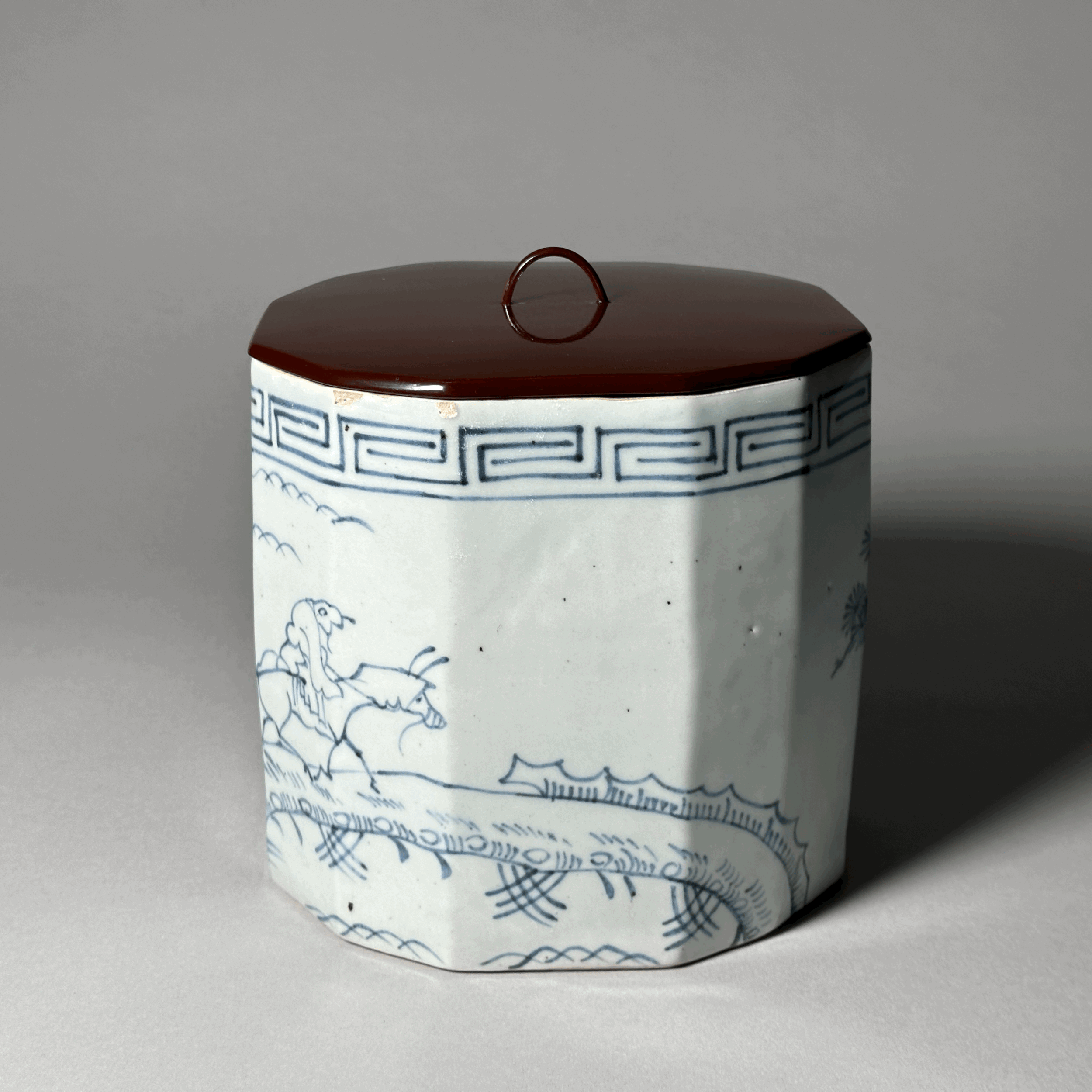 Image 2 of 8
Image 2 of 8

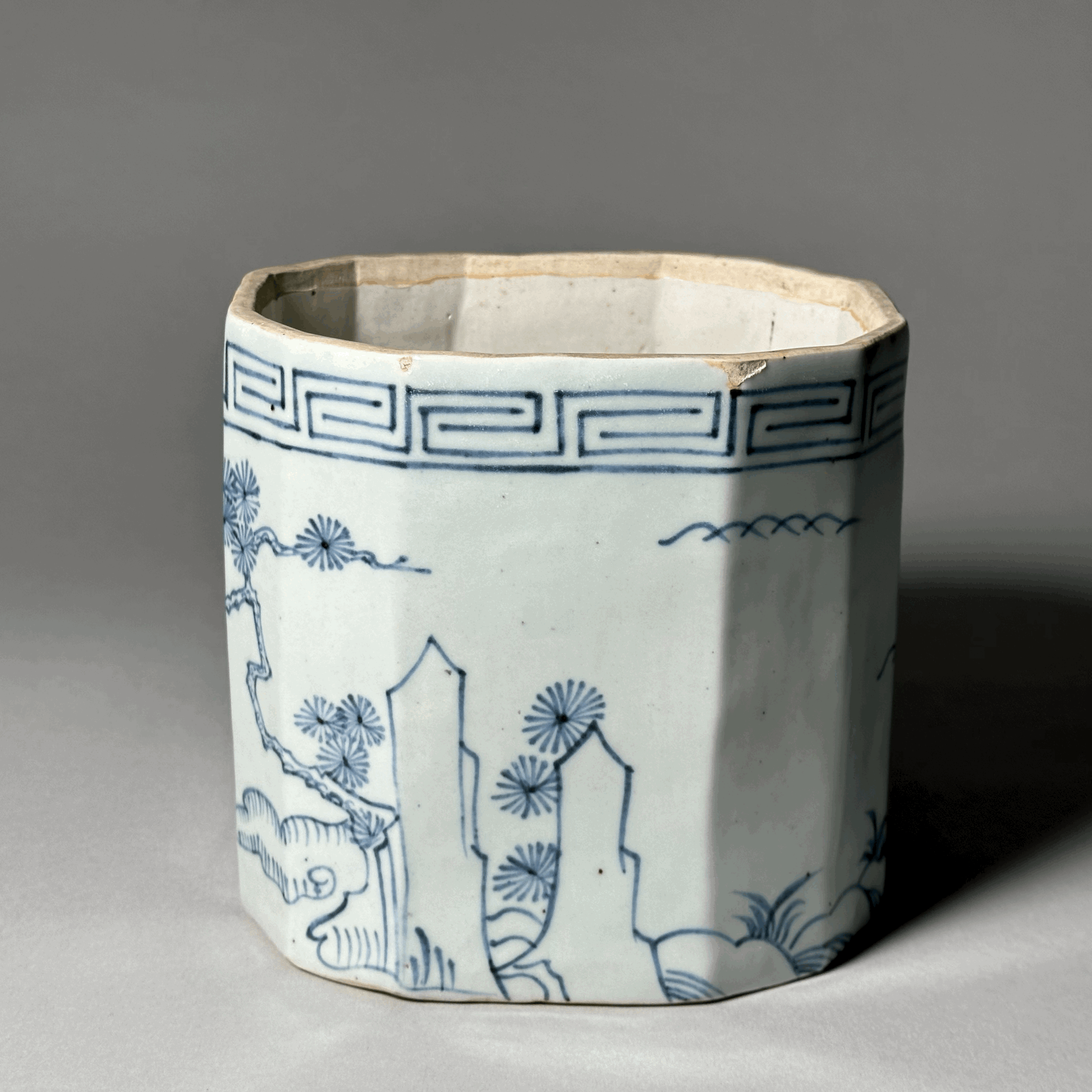 Image 3 of 8
Image 3 of 8

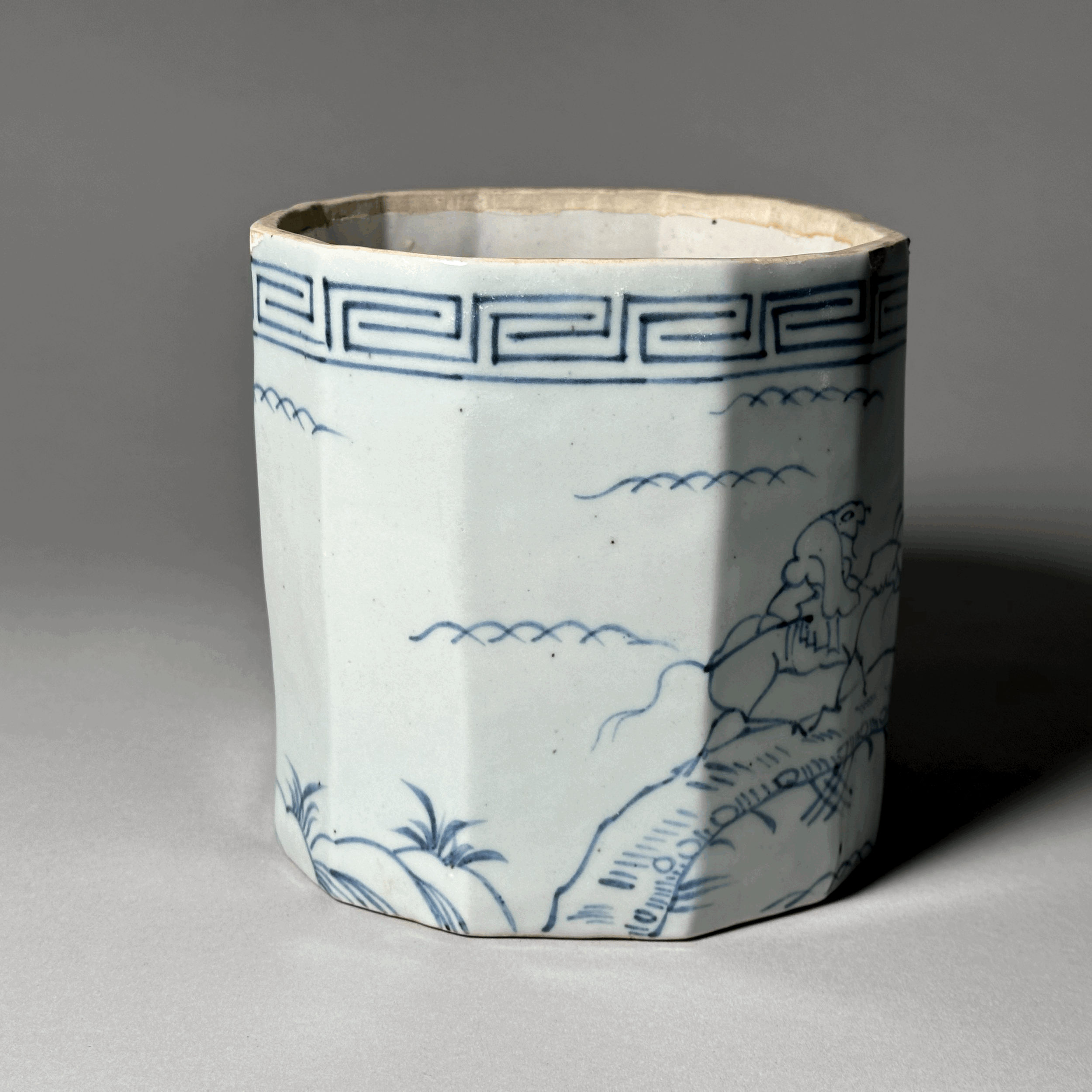 Image 4 of 8
Image 4 of 8

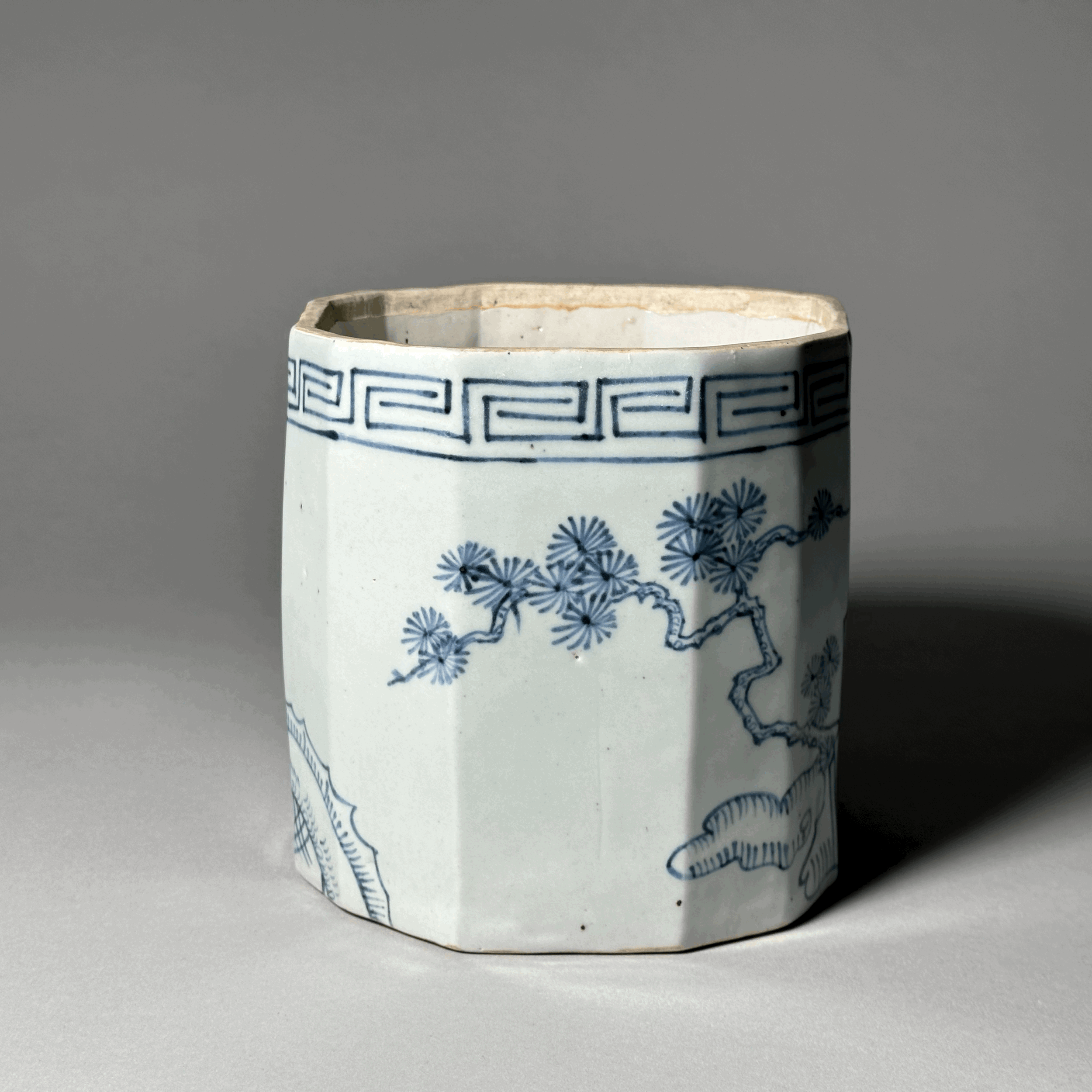 Image 5 of 8
Image 5 of 8

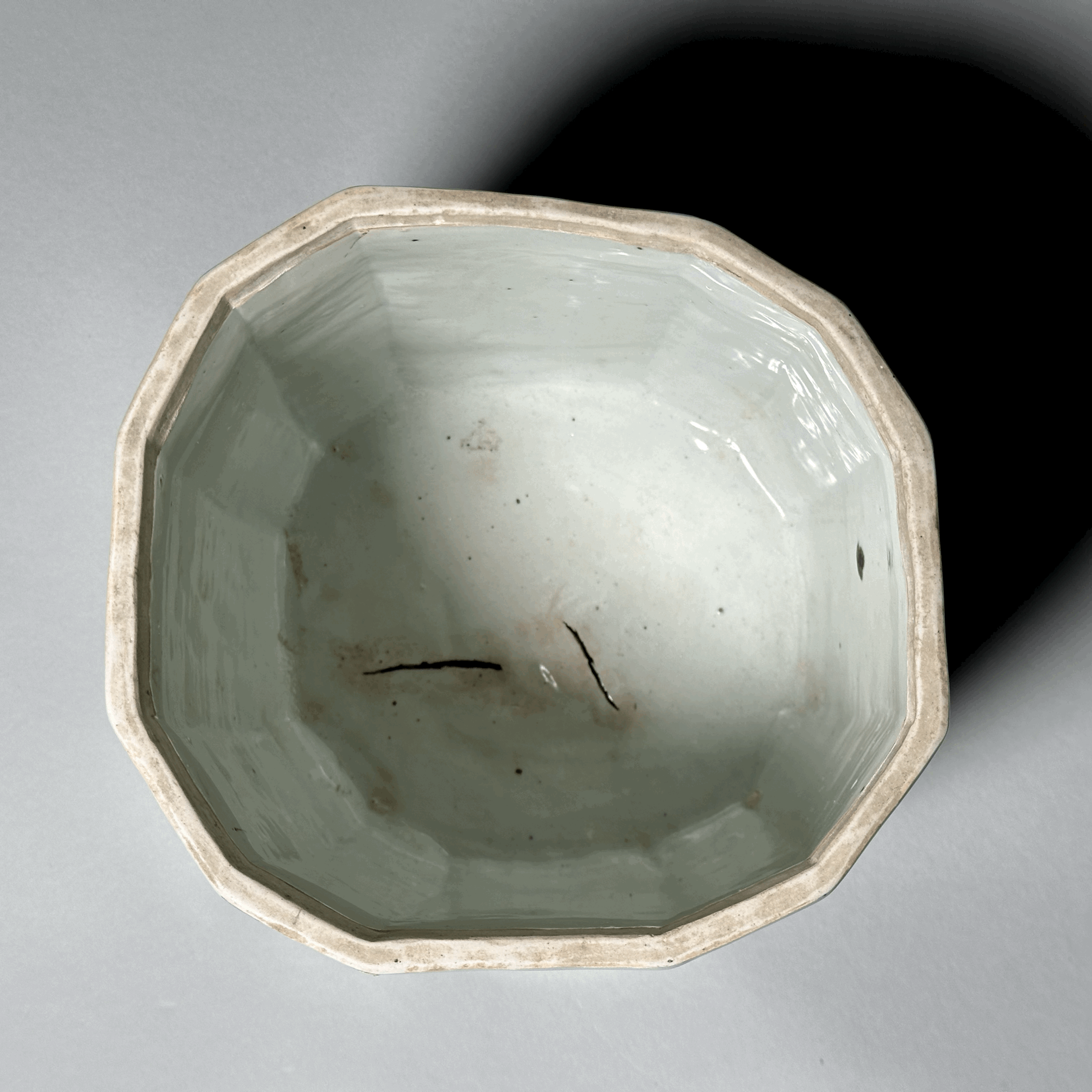 Image 6 of 8
Image 6 of 8

 Image 7 of 8
Image 7 of 8

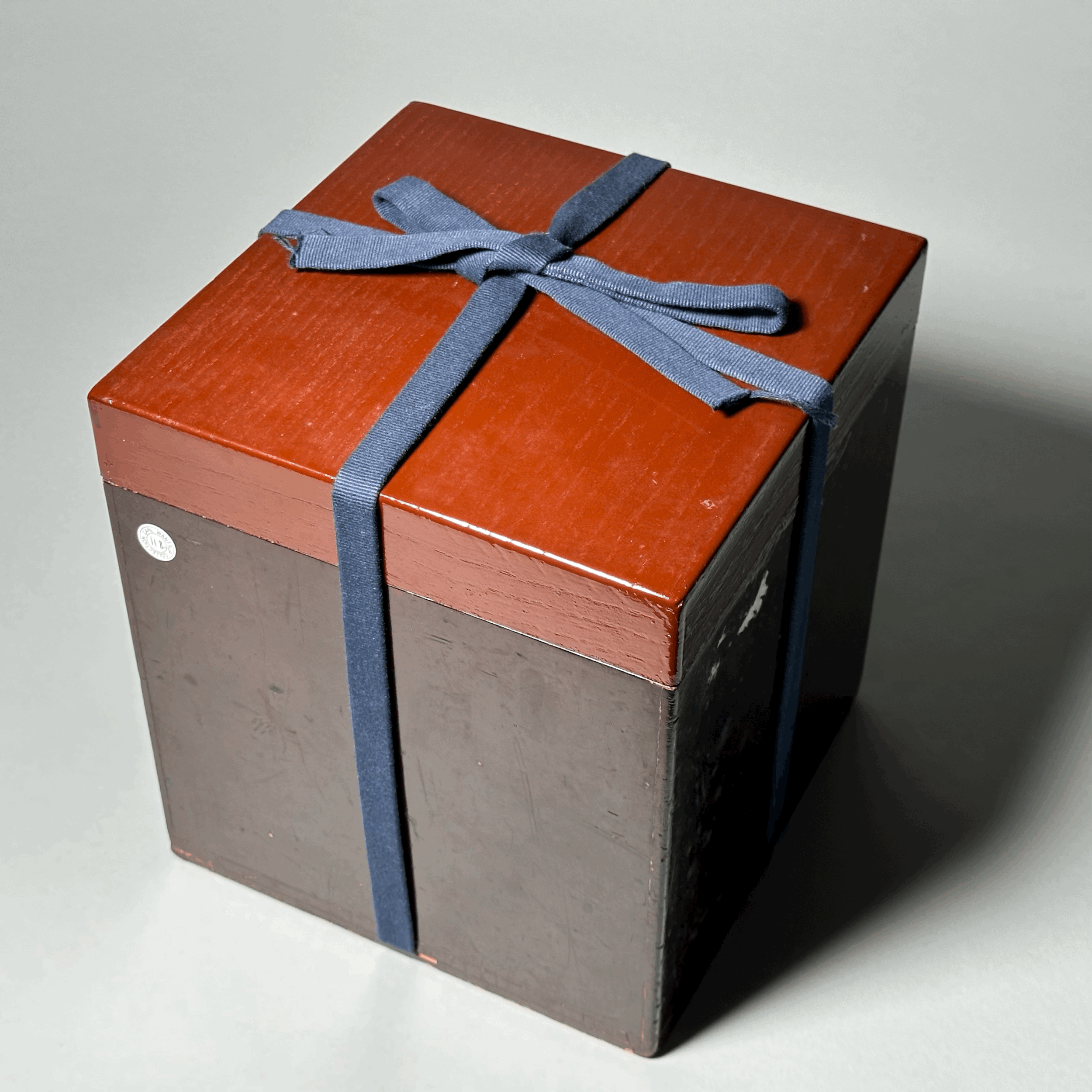 Image 8 of 8
Image 8 of 8









34. Twelve-sided Shoto-yaki mizusashi
Shantou/Swatow, China
Ming Dynasty, Tianqi Period (1620-1627)
Decorated finely in single-line style with the classical Chinese poet Du Fu riding a donkey over a bridge in a misty landscape, with a pine tree emerging from rocks to the reverse. 16.5cm high, 17.5 wide. Together with an old fitted Japanese brown lacquer lid and an old Japanese lacquered lacquered wooden box. Cat. 118
For a twelve-sided mizusashi of the same design see Kosometsuke, Yuzo Sugimura, Kyuryudo, 1969, introduction section.
Note: Shoto-yaki is the Japanese term for wares made in Swatow/Shatou, and this is an example of one the very few kosometsukepieces made in Swatow by Japanese order during the Tianqi Period. The design is very spacious, and with all of the vigour, humour and quietness found in the best and most iconic kosometsuke works. The design is very carefully conceptualised and laid out so that Du Fu is to the left of centre in direct view of the host, while the reverse design is off-centre so that the guests have a perfect view of the pine and rocks design. One feels the weariness of Du Fu depicted slumped over but at the same time the desire to hasten to their destination as Du Fu leans forward and the donkey’s ears prick forward.
Condition report (carefully viewed under UV, strong light and magnification): two firing cracks to the base which extend through the base to the interior (with early fill-repairs), glaze peeling to some points around the rim (firing/production flaw). Original lid missing.
Shantou/Swatow, China
Ming Dynasty, Tianqi Period (1620-1627)
Decorated finely in single-line style with the classical Chinese poet Du Fu riding a donkey over a bridge in a misty landscape, with a pine tree emerging from rocks to the reverse. 16.5cm high, 17.5 wide. Together with an old fitted Japanese brown lacquer lid and an old Japanese lacquered lacquered wooden box. Cat. 118
For a twelve-sided mizusashi of the same design see Kosometsuke, Yuzo Sugimura, Kyuryudo, 1969, introduction section.
Note: Shoto-yaki is the Japanese term for wares made in Swatow/Shatou, and this is an example of one the very few kosometsukepieces made in Swatow by Japanese order during the Tianqi Period. The design is very spacious, and with all of the vigour, humour and quietness found in the best and most iconic kosometsuke works. The design is very carefully conceptualised and laid out so that Du Fu is to the left of centre in direct view of the host, while the reverse design is off-centre so that the guests have a perfect view of the pine and rocks design. One feels the weariness of Du Fu depicted slumped over but at the same time the desire to hasten to their destination as Du Fu leans forward and the donkey’s ears prick forward.
Condition report (carefully viewed under UV, strong light and magnification): two firing cracks to the base which extend through the base to the interior (with early fill-repairs), glaze peeling to some points around the rim (firing/production flaw). Original lid missing.
